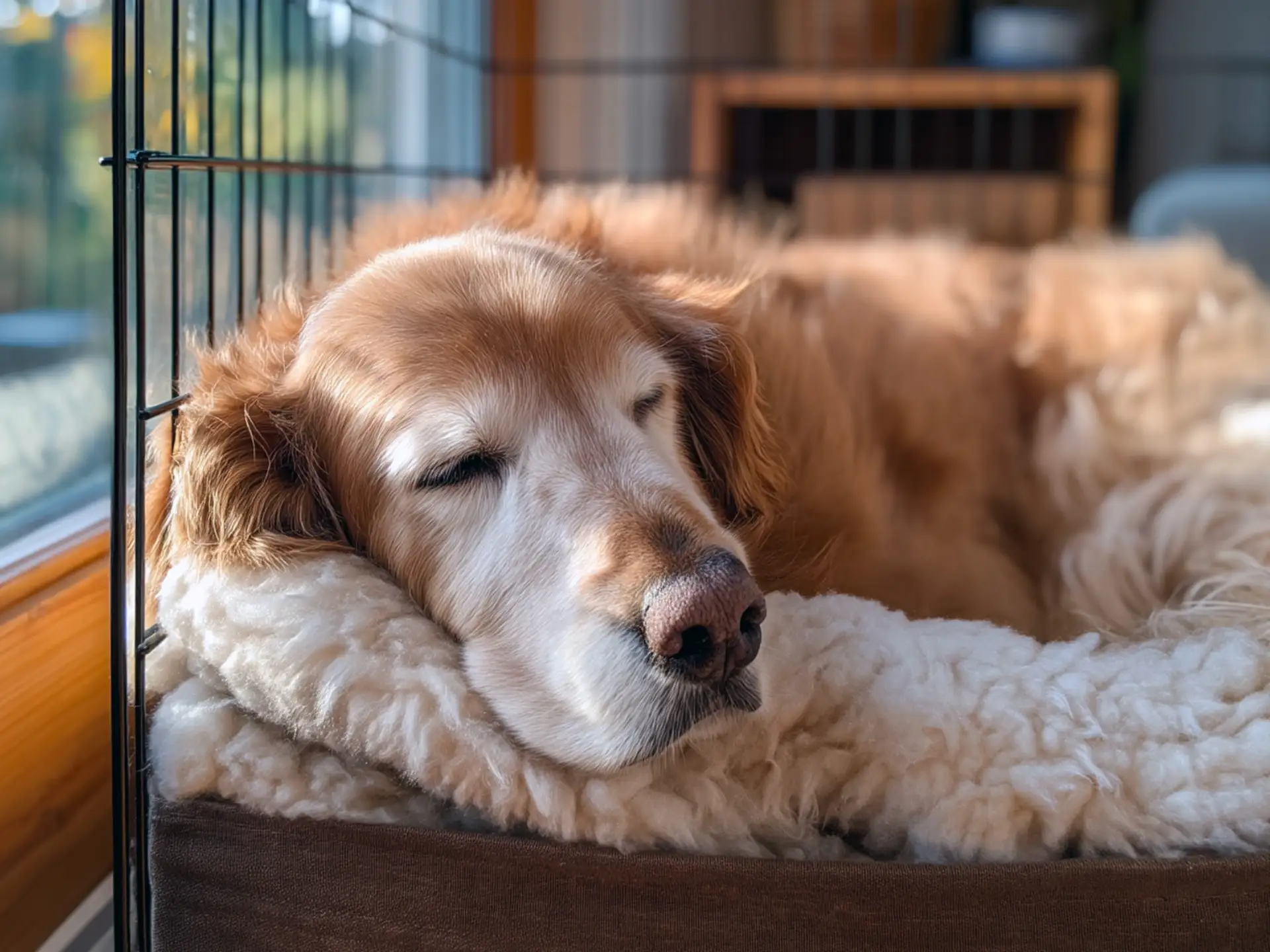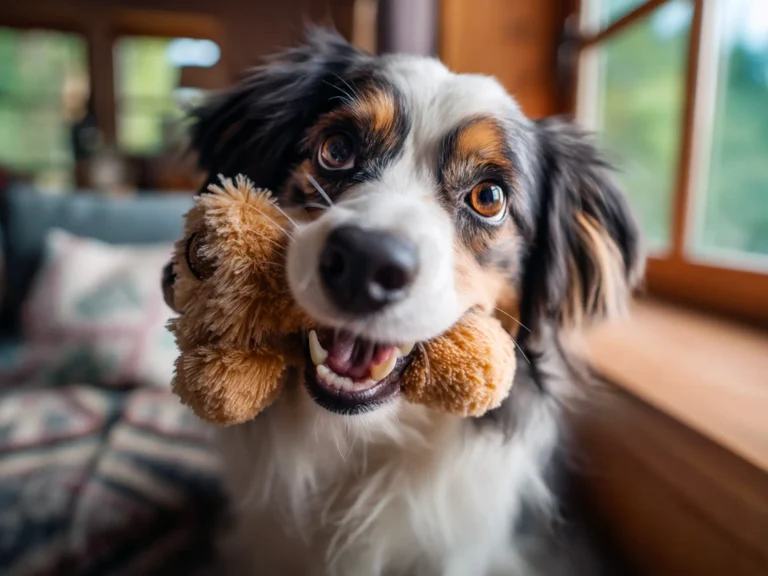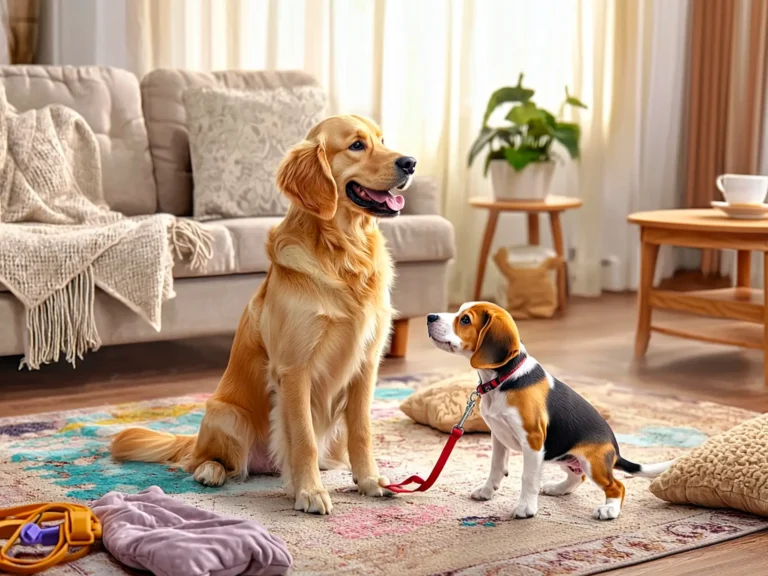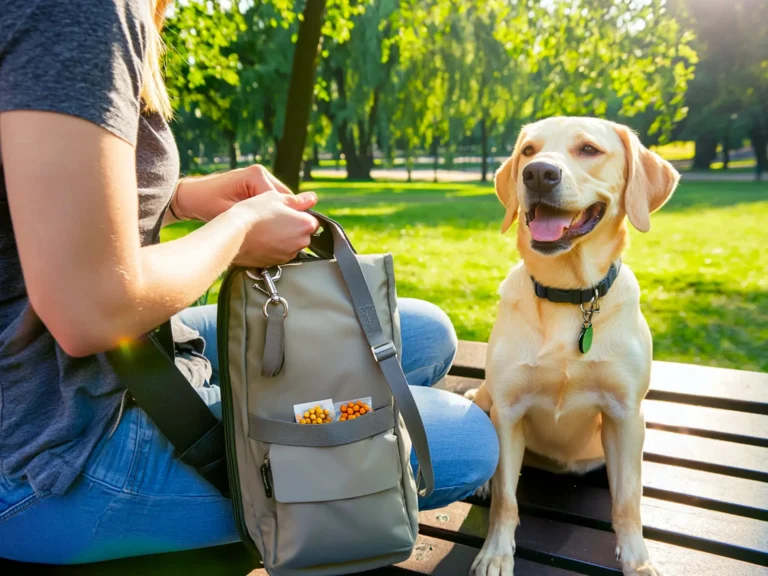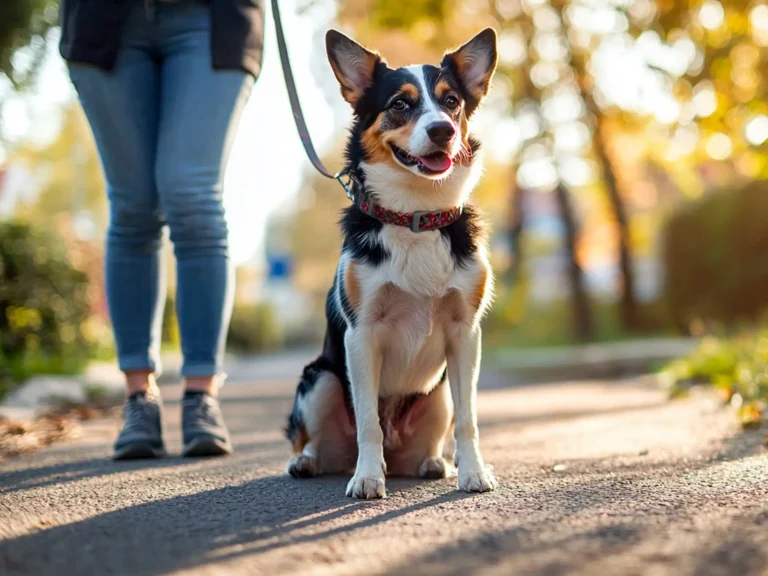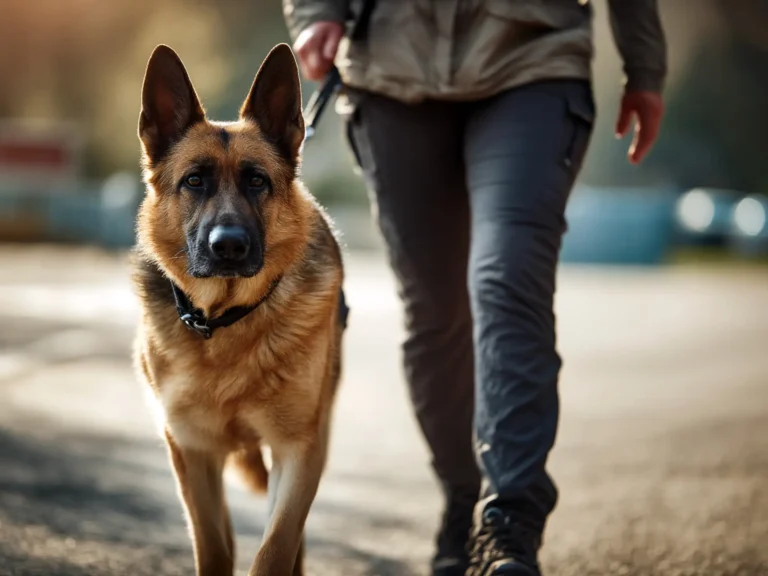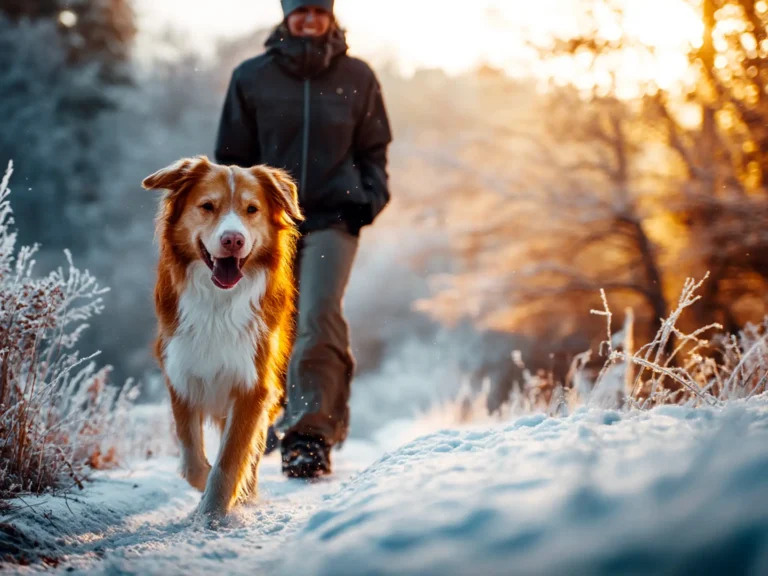Crate training a senior dog can feel intimidating, especially if your furry friend has spent years without one. Yet with patience and the right approach, even senior dogs can learn to see a crate as their safe, cozy retreat. Whether you’ve adopted a rescue with unknown habits or simply want to make travel and downtime easier, crate training offers peace of mind for both you and your dog.
- Why Crate Training an Older Dog Matters
- Key Preparation Before You Begin
- Step-by-Step Guide to Crate Training Your Older Dog
- Troubleshooting Common Issues
- Special Considerations for Older or Senior Dogs
- Maintaining and Reinforcing Good Crate Habits
- When to Seek Professional Help
- Conclusion
- How to Crate Train an Older Dog: Frequently Asked Questions
This guide walks you through every step of how to crate train an older dog, from choosing the right setup to overcoming common challenges with patience and consistency. You’ll learn gentle, effective techniques that respect your dog’s comfort level while helping them feel calm, confident, and secure inside their crate.
Key Takeaways:
• Crate training older dogs is possible with patience and structure.
• Choose a crate that fits your dog’s comfort and mobility.
• Never rush or use punishment; build calm trust.
• Consistency and positivity are key.
Why Crate Training an Older Dog Matters
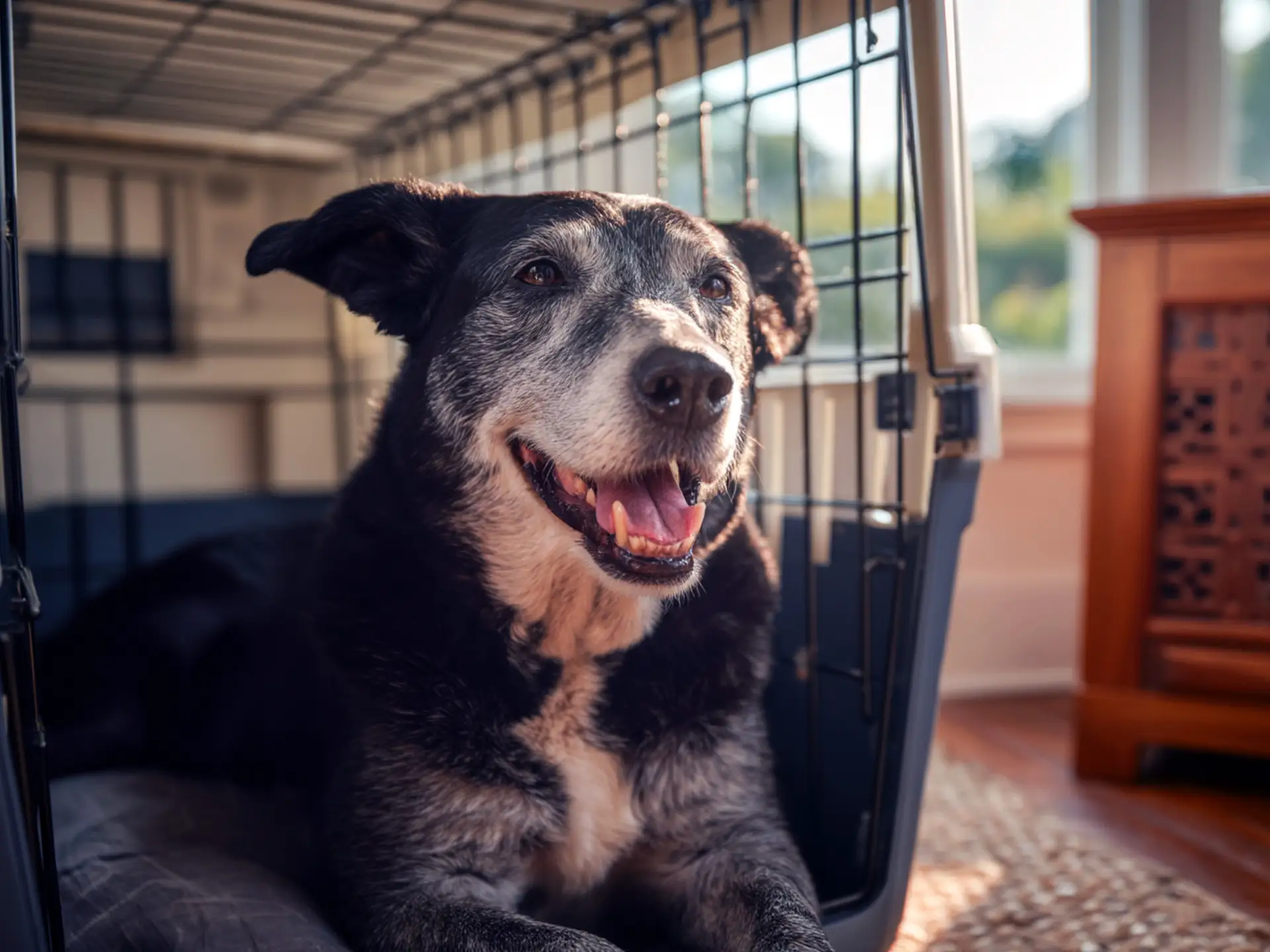
Many people think crates are only for puppies, but older dogs can benefit just as much—sometimes even more. When introduced correctly, a crate becomes a personal sanctuary that offers comfort, structure, and safety.
Key Benefits for Older Dogs
Crate training an older dog can:
- Create a safe space where your dog feels secure and relaxed when the environment gets noisy or stressful.
- Simplify travel and vet visits by giving them a familiar spot to rest in unfamiliar surroundings.
- Support house training for rescues or newly adopted adult dogs that may need a gentle reminder of indoor manners.
- Ease separation anxiety by offering a predictable routine and comforting environment.
- Promote recovery and rest after illness, surgery, or physical exertion.
Addressing Common Misconceptions
Some owners believe it’s too late to teach an older dog new behaviors, but dogs are adaptable at any age. What matters most is consistency and positive reinforcement. Unlike puppies, older dogs already understand many cues, making training smoother once trust is established.
The Hidden Value of Structure
Dogs thrive on routine. Crate training gives older dogs a sense of order that reduces anxiety and confusion. Especially for senior dogs, this structure can help them rest better, feel safer during changes, and handle transitions more calmly.
Key Preparation Before You Begin
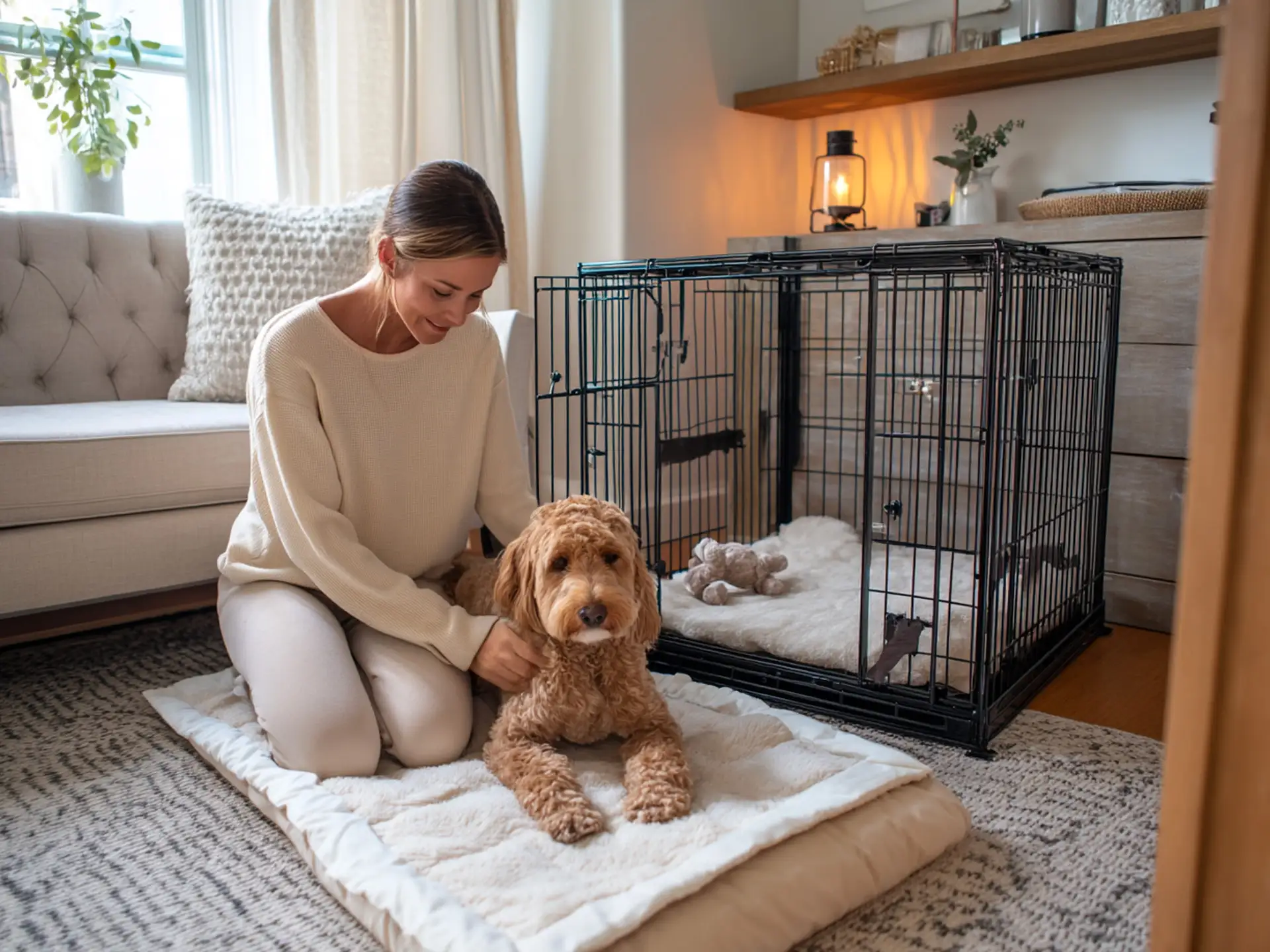
Before you start any crate training, set your dog up for success. Preparation ensures the process feels calm, positive, and comfortable from the start.
Choose the Right Crate
The right crate depends on your dog’s size, temperament, and health. It should be large enough for your dog to stand, turn around, and stretch comfortably. Avoid crates that are too big or too small.
| Type of Crate | Best For | Pros | Things to Consider |
|---|---|---|---|
| Wire Crate | Most breeds | Good airflow, foldable, easy to clean | Can be noisy if not padded |
| Plastic Crate | Travel, anxious dogs | Cozy and enclosed | Less ventilation |
| Soft-Sided Crate | Calm dogs, indoor use | Lightweight, portable | Not for chewers or escape artists |
| Furniture-Style Crate | Indoor living spaces | Stylish, blends with home | Heavier and less portable |
Add a comfortable mat or orthopedic bed, especially if your dog has arthritis or joint stiffness.
You can explore a variety of quality crates designed for comfort and safety on the DogPack Marketplace to find one that best fits your dog’s needs.
Pick the Right Location
Place the crate in a quiet area where your dog can still see some activity. Avoid isolating them in another room, but also avoid busy zones like near the front door or kitchen. Ideal spots include:
- A corner of the living room with good light and airflow
- Your bedroom if your dog sleeps near you
- Any calm space where your dog feels included but not overstimulated
Prepare Mentally and Emotionally
Older dogs respond best to patience and encouragement. Stay consistent, speak calmly, and reward progress—even small steps. Avoid forcing your dog inside or closing the door too soon.
Check for Health Concerns
If your dog has mobility issues or bladder problems, consult your vet before starting. Some senior dogs need more frequent breaks or a modified crate setup.
Create a Positive First Impression
- Let your dog sniff and explore the crate freely
- Add familiar scents like a worn T-shirt or favorite blanket
- Toss a few treats or a chew toy inside to build curiosity
- Keep the door open so your dog never feels trapped
Proper setup is half the battle. A comfortable, well-positioned crate transforms the experience from confinement into comfort.
Step-by-Step Guide to Crate Training Your Older Dog
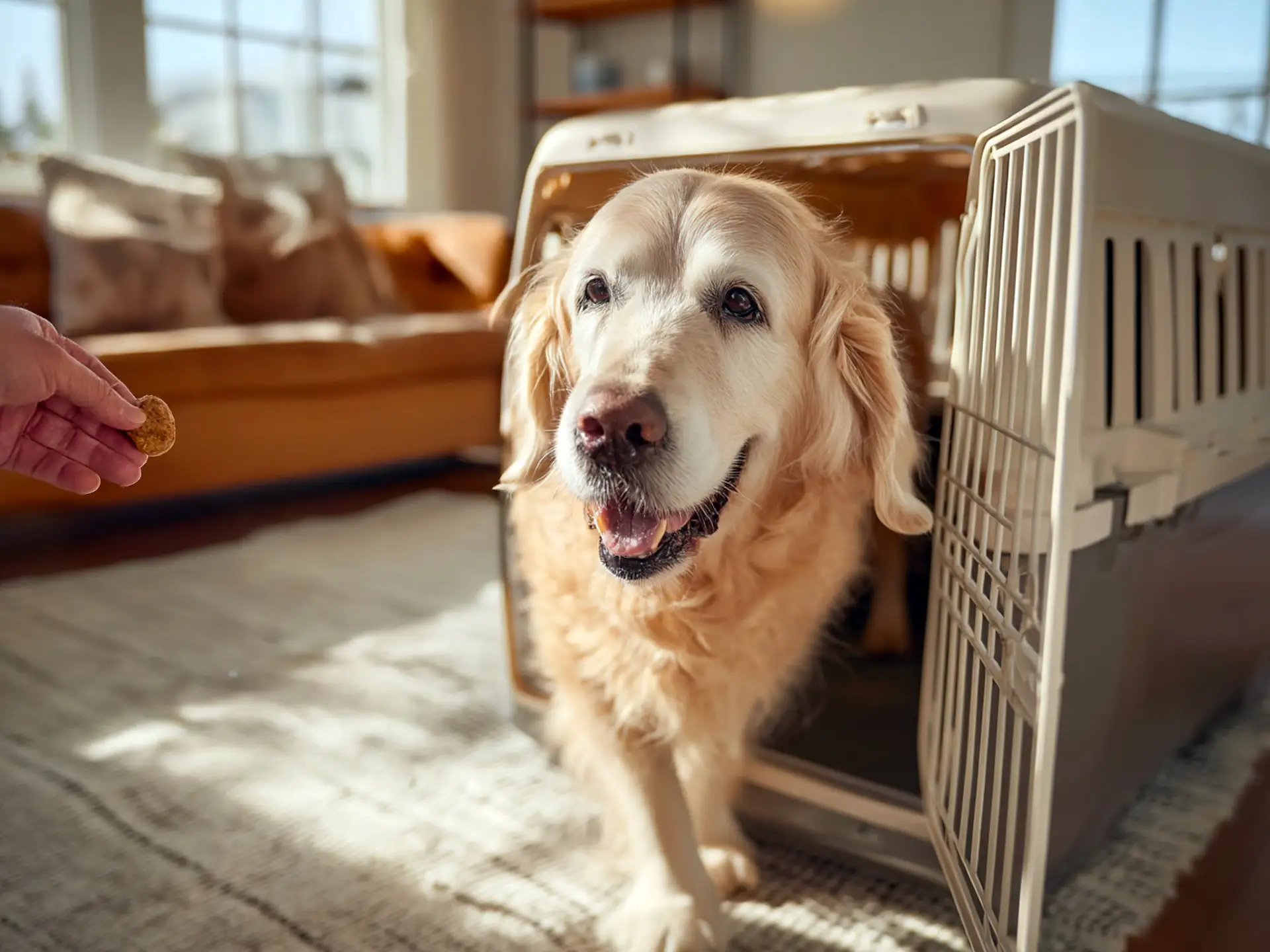
Crate training an older dog requires patience and a gradual approach. Following gentle crate training methods helps avoid stress and builds confidence, especially for dogs with past crate resistance. The steps below help you move forward confidently and compassionately.
Step 1: Introduce the Crate Positively
Let your dog explore the crate without pressure. Keep the door open and allow them to approach at their own pace.
How to do it:
- Place the crate in a calm, familiar space.
- Scatter treats near the entrance and just inside.
- Sit nearby without interacting too much — your calm presence builds trust.
- Praise softly when your dog shows curiosity or steps inside.
Goal: Your dog should feel safe being near or partially inside the crate.
Step 2: Encourage Entry and Comfort
Once your dog is comfortable around the crate, make it inviting enough to enter fully.
Try these techniques:
- Place a soft blanket, toy, or chew bone inside.
- Offer a high-value treat (like small bits of chicken) only when they step fully inside.
- Use verbal cues like “crate” or “bed” every time they go in.
Goal: Your dog enters the crate willingly and begins to associate it with rewards and comfort.
Step 3: Feed Meals in the Crate
Feeding your dog inside the crate helps reinforce positive associations.
Tips:
- Start by placing the food bowl just inside the door.
- Gradually move it deeper as your dog grows comfortable.
- Keep the door open during meals for the first few days.
When your dog eats calmly inside, you can begin closing the door for short periods after they finish.
Step 4: Practice Short Confinement Sessions
Once your dog stays relaxed with the door closed during meals, start extending crate time.
How to progress:
- Ask your dog to enter, then close the door for 1–2 minutes.
- Stay visible and speak reassuringly.
- Gradually increase duration to 5, then 10 minutes.
- Always let them out calmly — avoid excitement or rushing.
Important: Never open the door while your dog is whining. Wait for silence, even briefly, so they learn calm behavior gets rewarded. As Fear Free Happy Homes explains, this teaches that quiet, calm behavior earns rewards—not fussing.
Step 5: Build Duration and Distance
When your dog remains calm for short sessions, start leaving the room for brief moments.
Progress plan:
| Stage | Duration | What to Do |
|---|---|---|
| 1 | 5–10 minutes | Stay nearby and read or work quietly |
| 2 | 15–20 minutes | Leave the room briefly |
| 3 | 30–45 minutes | Practice while you do chores or step outside |
| 4 | 1–2 hours | Use crate for naps or quiet time |
Add a chew toy or stuffed Kong to make the experience enjoyable.
Step 6: Introduce Overnight and Unsupervised Use
Once your dog handles longer sessions calmly, you can start using the crate at night or while you’re out.
Helpful guidelines:
- For bedtime, place the crate near your bed at first.
- If your dog gets restless, move gradually farther away.
- Avoid long confinement times for senior dogs — frequent breaks are essential.
- Keep the crate door open during the day when not training, so it remains a freely accessible comfort zone.
Crate training is not about control — it’s about creating a secure retreat where your dog can relax. Consistency, empathy, and small wins will get you there faster than any shortcut.
Troubleshooting Common Issues
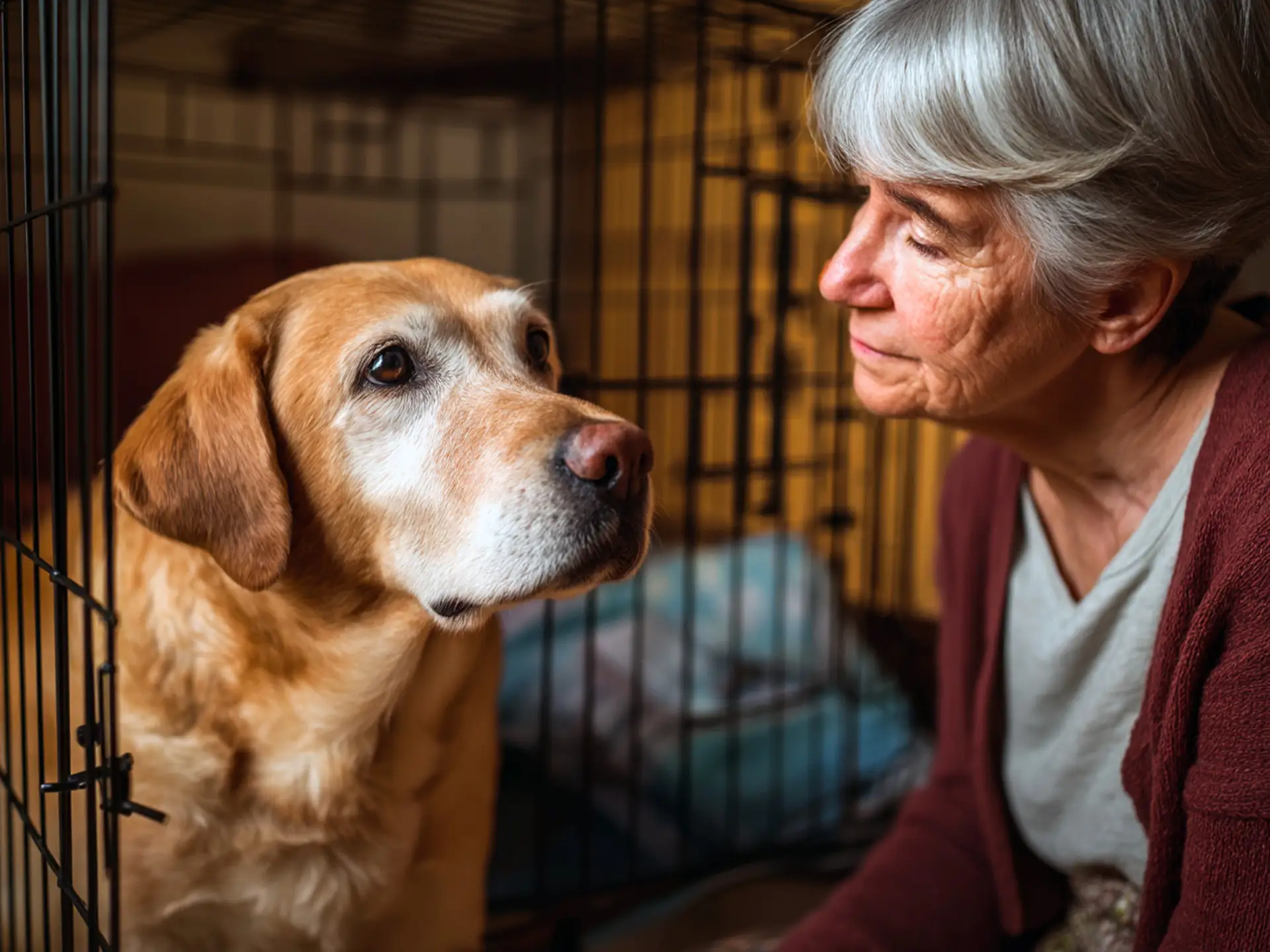
Even with patience and structure, older dogs may resist crate training at first. Understanding what’s behind the behavior helps you correct it effectively and compassionately.
1. Whining or Barking in the Crate
Vocalizing is common when a dog feels uncertain or wants attention. It’s important to recognize the reason before reacting.
Possible causes:
- Separation anxiety or confusion about why they’re confined
- Excess energy or lack of exercise before crate time
- Reaction to outside noise or visual distractions
What to do:
- Take your dog out for exercise before crate sessions
- Ignore whining unless you suspect a real need (bathroom, pain)
- Reward silence with calm praise or a soft “good” once they settle
- Keep sessions short and positive until your dog relaxes more consistently
Pro Tip: Never open the door while your dog is whining. Doing so teaches them that noise earns freedom.
2. Refusal to Enter the Crate
Some older dogs associate crates with punishment or past stress. Others simply find new routines unsettling.
What helps:
- Place high-value treats or toys just inside the door and let your dog choose to enter
- Feed regular meals inside to build positive links
- Add familiar scents like your worn T-shirt or their favorite blanket
- Keep the door open until your dog feels fully comfortable walking in voluntarily
If resistance continues for several days, step back a phase and move slower. Reassurance builds more progress than pressure.
3. Accidents Inside the Crate
Accidents don’t always mean disobedience. Senior dogs may have weaker bladders, medical issues, or confusion about the new setup.
Check the following:
- Crate size: Too large, and dogs may use one side as a bathroom
- Timing: Avoid crating too soon after meals or water breaks
- Age-related issues: Older dogs may need more frequent bathroom trips
Solutions:
- Keep crate sessions short in the beginning
- Take your dog out before and immediately after crate time
- Use washable crate pads or pee pads temporarily if needed
- Consult a vet if accidents persist, as it may signal an underlying health issue
4. Anxiety or Pacing Inside the Crate
Restlessness can happen if the dog feels trapped or overstimulated.
How to calm them:
- Cover part of the crate with a breathable blanket to reduce external stimuli
- Keep background sounds soft and steady (light music or a white noise machine)
- Offer a long-lasting chew to help release nervous energy
- Practice very short sessions, then extend gradually once calm behavior returns
5. Using the Crate as Punishment
A crate should never be used to isolate or discipline your dog. Doing so creates fear and resistance.
Instead:
- Make the crate a positive space filled with comfort, treats, and calm energy
- Use neutral or happy cues when asking your dog to enter
- Allow them to rest in the crate voluntarily outside of training sessions
A few setbacks are normal, especially with older dogs who may carry past habits or fears. Stay patient, reward calm behavior, and adjust your pace as needed. Over time, the crate will transform from a source of stress into a place of peace.
Special Considerations for Older or Senior Dogs
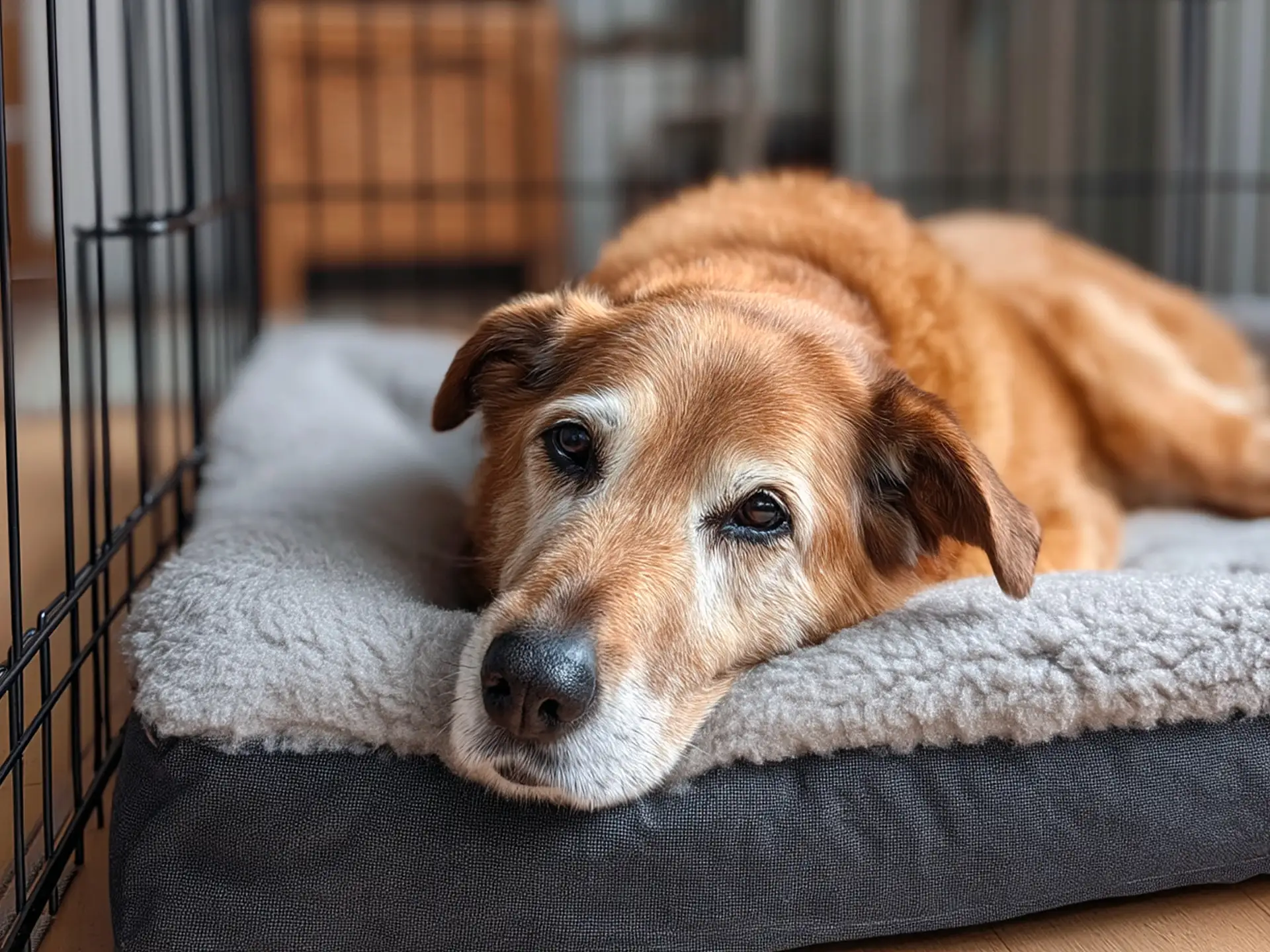
Training an older dog isn’t just about behavior. It’s about comfort, understanding, and respect for their physical and emotional needs. Senior dogs often require modified approaches that prioritize well-being over speed.
Physical Comfort and Mobility
Older dogs may have arthritis, joint stiffness, or reduced mobility. The crate should support their comfort, not add strain.
Practical tips:
- Use a crate with a low entry threshold or a small ramp for easier access
- Add orthopedic bedding for joint support
- Avoid placing the crate in cold or drafty areas, which can worsen stiffness
- Keep the floor surface non-slip around the crate to prevent slipping
If your dog has difficulty turning around, consider a slightly larger crate for extra room.
Adjusting Crate Duration
Senior dogs often need more frequent breaks than younger ones. Holding it too long can cause discomfort or accidents.
Recommended crate times for older dogs:
| Dog’s Condition | Ideal Duration | Notes |
|---|---|---|
| Healthy adult (6–8 years) | 2–3 hours | Fine for short naps or downtime |
| Senior (9–12 years) | 1–2 hours | Include breaks for stretching and hydration |
| Elderly (13+ years) | 30–60 minutes | Keep crate time minimal, mainly for rest |
Allow plenty of free time outside the crate for gentle walks and mental enrichment.
Dealing With Cognitive Decline or Anxiety
Some senior dogs experience Canine Cognitive Dysfunction (dog dementia) or age-related anxiety. Crate training can still work, but the focus should be on reassurance and routine.
How to adapt:
- Keep lighting soft and consistent to avoid confusion
- Use calming aids like lavender-scented blankets or Adaptil diffusers
- Maintain predictable crate times each day to build familiarity
- Never startle or wake your dog abruptly when they’re resting inside
Consistency helps older dogs feel safe even as their senses or memory decline.
Rescue and Trauma Considerations
Many adopted senior dogs have unknown histories or negative crate experiences. They may associate confinement with abandonment.
What helps:
- Introduce the crate slowly with no closed doors for the first week
- Allow your dog to go in and out freely
- Celebrate small wins — even lying near the crate is progress
- Pair crate time with soothing routines like calm petting or soft music
The goal is not control, but trust. A gentle, predictable process helps heal fear and build new positive associations.
Older dogs can absolutely learn to love their crate. With comfort, consistency, and empathy, it becomes a familiar retreat that supports their golden years with dignity and peace.
Maintaining and Reinforcing Good Crate Habits
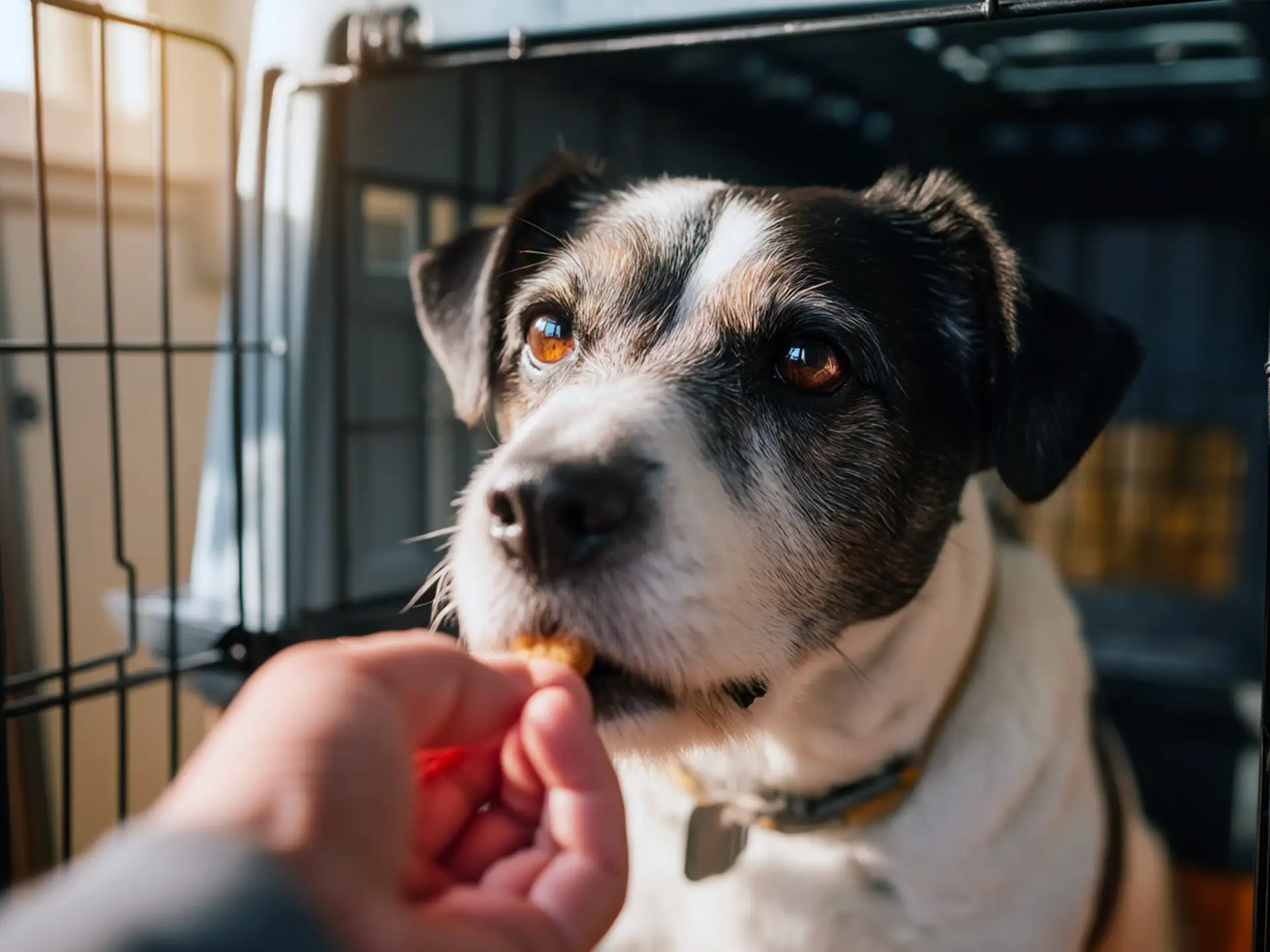
Crate training doesn’t end when your dog finally feels comfortable inside. To make the habit last, you need to keep the crate positive, consistent, and part of your dog’s daily routine.
Keep the Crate a Happy Place
Your dog should see the crate as a calm retreat, not a signal that you’re leaving. Small, consistent actions keep that trust intact.
Practical habits to maintain:
- Leave the crate door open during the day so your dog can come and go freely
- Occasionally toss in treats or a favorite toy when your dog isn’t looking
- Encourage naps inside the crate even when you’re home
- Avoid sending your dog inside immediately before you leave, so it’s not linked with separation
These small touches help the crate remain a symbol of safety rather than isolation.
Use the Crate for Routine, Not Confinement
Older dogs thrive on predictable structure. Integrate the crate naturally into their daily rhythm without making it feel restrictive.
Simple ways to build routine:
| Situation | How to Use the Crate |
|---|---|
| After walks | Allow your dog to cool down and rest inside for 15–20 minutes |
| During quiet time | Offer the crate for naps while you read or work |
| At night | Keep it near your bed to maintain a sense of closeness |
| During guests or noise | Let your dog retreat voluntarily if they feel overstimulated |
The more your dog associates the crate with peace, the stronger their comfort and trust become.
Reinforce Calm Behavior
Reinforcement should never stop, even once training feels complete. Older dogs may forget routines if they aren’t rewarded occasionally.
Effective reinforcement methods:
- Give a small training treat when your dog enters the crate calmly
- Praise quietly when they rest inside without fussing
- Offer comfort items (like a chew toy or soft blanket) to keep them engaged
Avoid big celebrations or excitement when letting them out — staying calm prevents overexcitement and whining habits.
Keep Observing and Adjusting
Your dog’s needs may evolve with age. Energy levels, bladder control, and anxiety can shift over time.
Check regularly for:
- Signs of discomfort (stiffness, panting, whining)
- Health changes that affect crate duration
- Bedding wear or odors that need cleaning
- New noises or lights that could disturb rest
Refreshing the crate setup or relocating it slightly can reignite comfort if behavior starts to change.
Maintaining a healthy crate routine is about consistency, not confinement. When used with love and patience, the crate becomes your dog’s own little sanctuary, a place to rest, recharge, and feel completely at ease.
When to Seek Professional Help
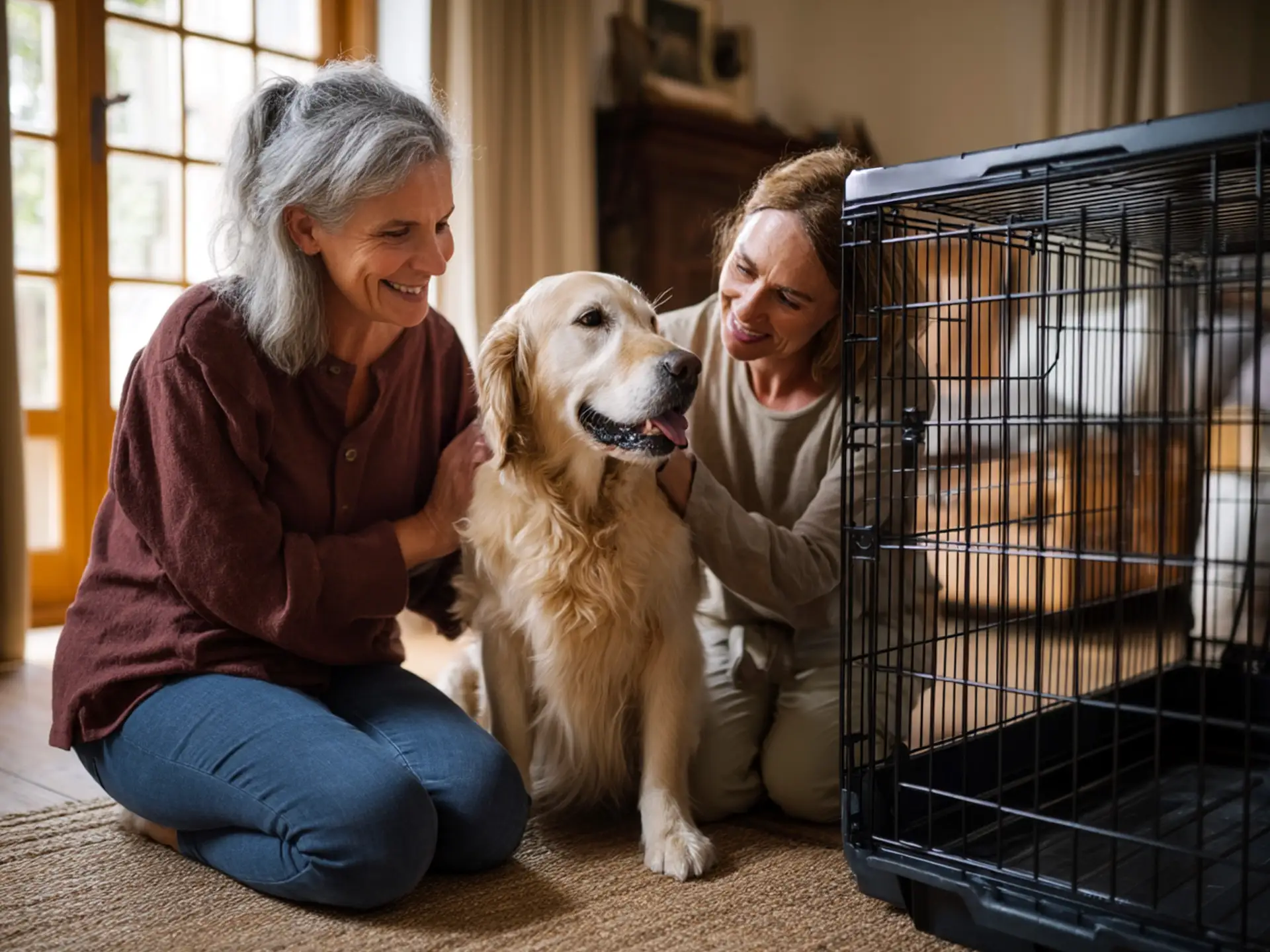
Most older dogs adjust well to crate training with patience and steady guidance. But in some cases, professional support can make all the difference, especially when anxiety or medical issues interfere with progress.
Signs It’s Time to Ask for Help
If your dog shows any of the following signs, it’s worth consulting a certified trainer or veterinarian:
- Severe anxiety: nonstop barking, drooling, panting, or trembling when near the crate
- Aggression: growling or snapping when you approach the crate
- Health issues: repeated accidents, heavy panting, or difficulty moving in and out
- Self-harm behaviors: chewing at the crate door or trying to escape
- Refusal to eat or drink when the crate is visible
These behaviors often indicate deeper fear or discomfort that requires specialized attention.
Who to Contact
- Certified dog trainer or behaviorist: Look for professionals with certifications from CCPDT or IAABC. They can design a customized desensitization plan and coach you through each step.
- Veterinarian: Rule out medical conditions that might be causing pain or bladder issues. Your vet can also recommend anxiety management tools or mild calming aids.
- Rescue or shelter behavior team: If you adopted your dog recently, these teams often have experience helping older dogs adjust to crate life.
What to Expect from a Professional Plan
A qualified behaviorist typically combines:
- Gradual desensitization exercises
- Counterconditioning to replace fear with positive associations
- Tailored crate setup suggestions based on your dog’s personality and health
- Gentle behavior modification rather than forced exposure
With expert guidance, progress often happens faster and more peacefully.
Crate training an older dog should never become a source of distress. When handled with expert support, it remains a process rooted in patience, trust, and understanding, the foundation of every strong bond between a dog and their person.
Conclusion
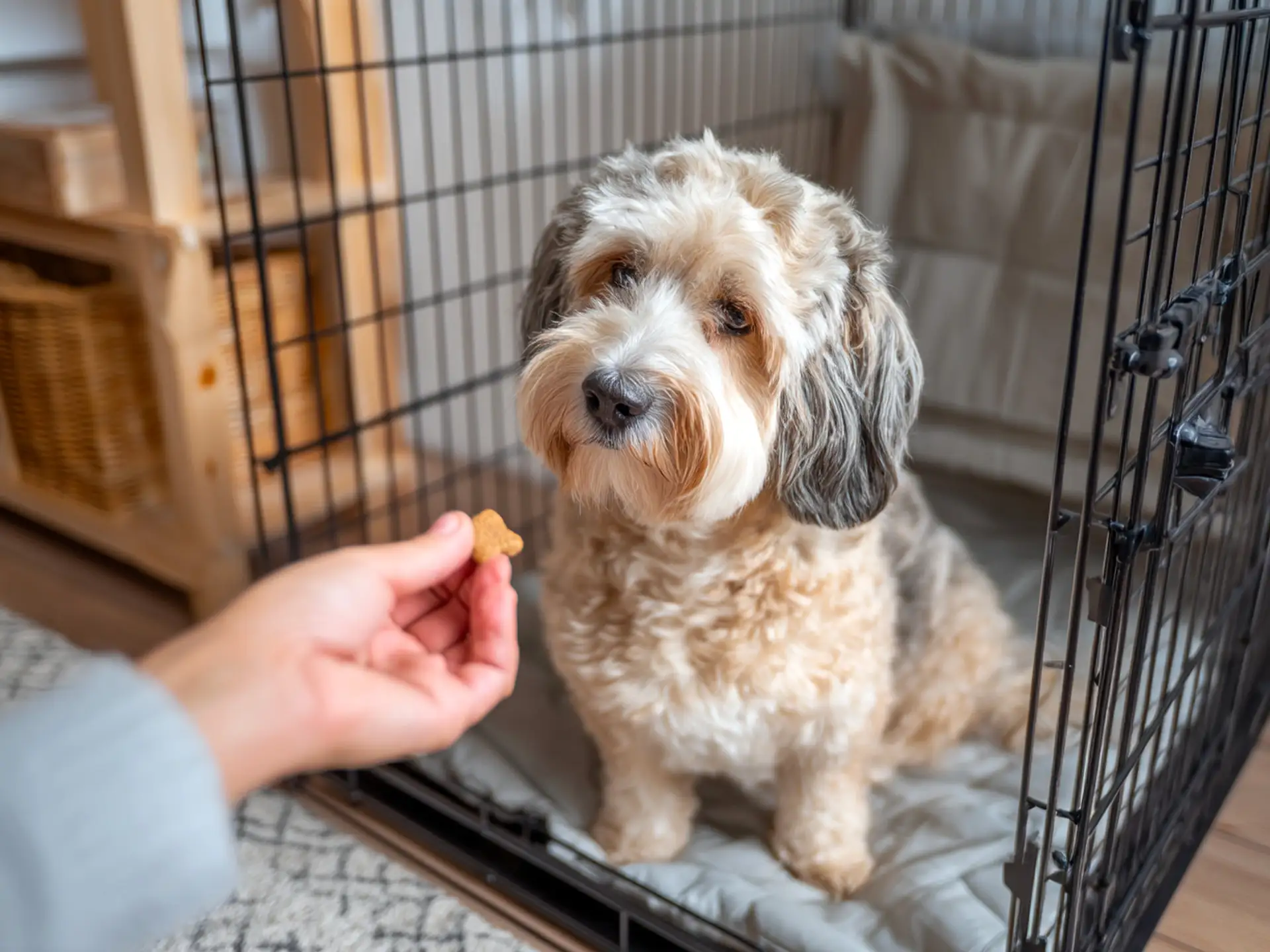
Crate training an older dog is not about control. It’s about creating a familiar place of peace through gentle crate training methods that focus on comfort and trust. With patience, consistency, and kindness, even a senior dog can learn to see the crate as a safe and restful retreat.
When done correctly, crate training helps your dog feel secure during travel, vet visits, or quiet moments at home. It also builds trust, creates structure, and strengthens the bond you share every day. Every small step brings your dog closer to comfort and confidence.
If you are ready to begin, start with short sessions and plenty of encouragement. Track your progress, consult your veterinarian or a certified trainer if needed, and celebrate each bit of progress.
With love, patience, and understanding, any dog, no matter their age, can learn that the crate is not confinement. It is home.
How to Crate Train an Older Dog: Frequently Asked Questions
How long can an adult dog stay in a crate?
An adult dog can stay in a crate for up to four hours during the day and about eight hours overnight. Older dogs may need shorter sessions and more frequent breaks to stretch, hydrate, and relieve themselves comfortably without stress.
When should I feed my dog in the crate?
Feed your dog in the crate once they feel calm and secure inside. Start with open-door meals so they build positive associations. When your dog eats comfortably, gradually close the door for short periods to reinforce trust and relaxation during meals.
What crate type is best for older dogs?
The best crate for older dogs is one that’s sturdy, roomy, and easy to enter. Wire crates provide ventilation, while plastic ones feel cozier. Add an orthopedic bed to support joints and ensure your senior dog can stand, turn, and rest comfortably.
My dog already has separation anxiety. Can crate training help?
Crate training can help dogs with separation anxiety when introduced gently. Keep sessions short and positive, use calm reassurance, and reward quiet moments. Gradual desensitization teaches your older dog that the crate is a safe, comforting space.
Should I cover my dog’s crate?
You can partially cover your dog’s crate to help them feel secure, especially in bright or noisy areas. Use a breathable fabric and leave one side open for airflow and visibility. Avoid full coverage to prevent overheating and anxiety.
What if my older dog never adjusts to crate training?
If your older dog remains anxious despite patient crate training, try alternatives like a playpen or gated room. The goal is to create a calm, safe space that offers structure and comfort without forcing them into stressful confinement.
Can crate training help with nighttime restlessness?
Yes. A familiar crate placed near your bed can help reduce nighttime pacing and anxiety. The secure environment helps older dogs relax, improving sleep quality and reducing confusion or restlessness overnight.

